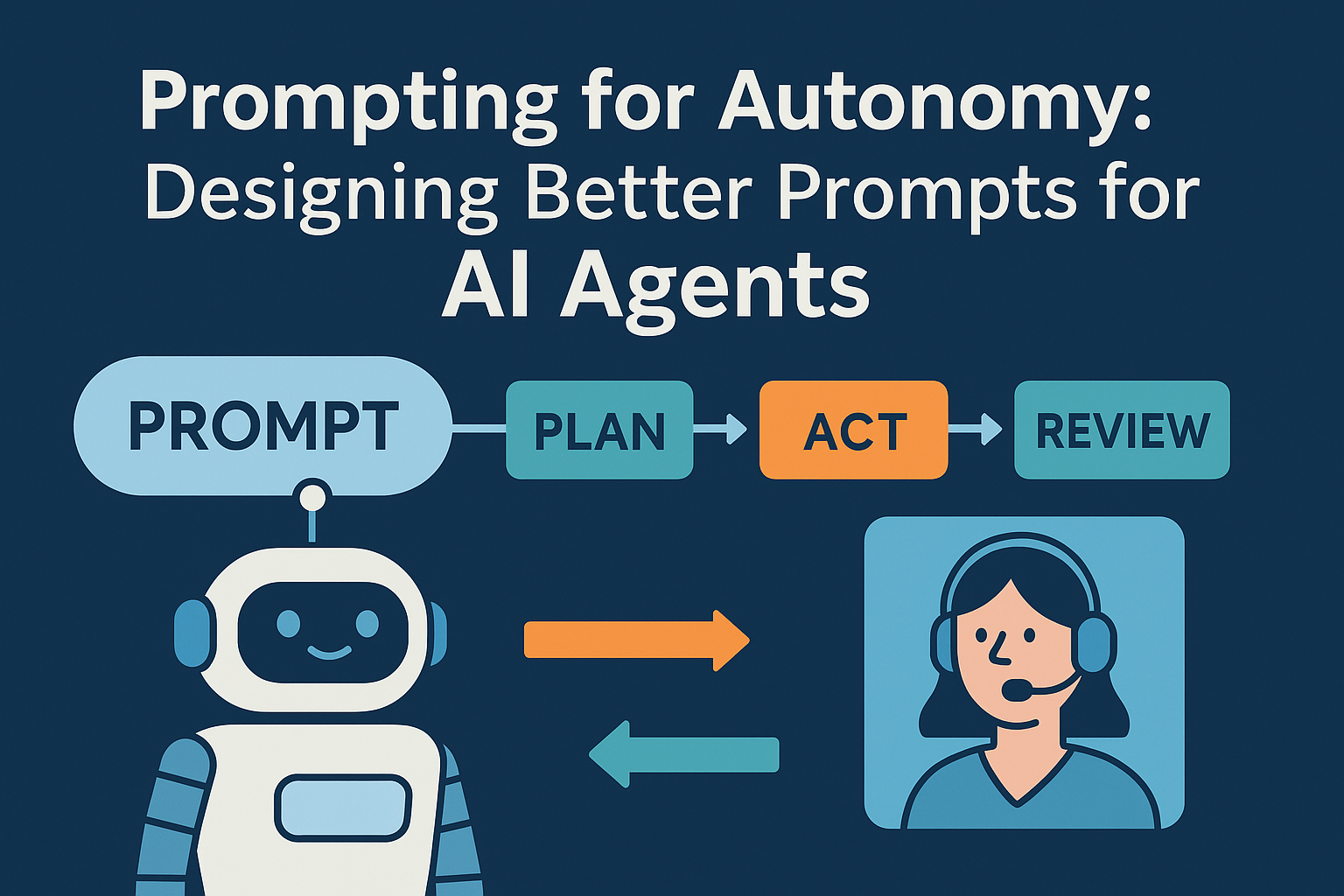Agentic AI is quickly becoming the next frontier — instead of passively answering questions, AI systems are learning to plan, act, and self-correct. But here’s the key: these agentic behaviors often start with how you design your prompts.
In this post, we’ll explore prompting for autonomy — practical strategies to design prompts that encourage GPTs and other AI copilots to behave more like independent agents.
👉 New to prompting? Start here: ChatGPT for Beginners: 7 Easy Ways to Boost Productivity with AI.
👉 Want pro-level control? Read 7 Proven ChatGPT Techniques Every Advanced User Should Know.
What is Agentic AI?
Agentic AI refers to systems that don’t just answer but decide the next step in a workflow — for example, breaking a task into subtasks, running through a plan, or taking actions across multiple tools.
This differs from traditional chatbots. Instead of responding passively, agentic AI behaves more like a digital teammate.
⚡ Core Principles of Prompting for Autonomy
When designing prompts for agentic AI, keep these principles in mind:
- Clarity of Role
Define the AI’s role clearly. Example:You are my project assistant. Break down this task into subtasks, prioritize them, and suggest deadlines.Related: How to Use GPTs Like a Pro: 5 Role-Based Prompts That Work. - Encourage Multi-Step Reasoning
Instead of single-shot answers, ask for a plan + explanation.Create a 3-step plan to research competitors, summarize findings, and suggest next actions. - Allow Self-Correction
Tell the AI to review its own output.Draft the response, then review it for clarity and accuracy. Suggest improvements. - Integrate Tools and Actions
Pair prompts with Zapier, Notion, or Trello so AI outputs translate into actions (see: How to Build Complex Workflows with AI Copilots and Zapier).
🛠 Step-by-Step Example: Task Management Agent
Goal: Create an autonomous task manager.
Step 1 – Role Prompt
You are my task manager. Break down “launching a blog” into subtasks.
Step 2 – Planning Prompt
Prioritize these subtasks and assign realistic deadlines.
Step 3 – Action Prompt
Export the task list in a table formatted for Notion.
Step 4 – Autonomy Prompt
Review your plan. Does it cover marketing, SEO, and content creation? Suggest improvements.
Combine this with The Best Free Notion Templates for Productivity in 2025 to turn prompts into actionable workflows.
💡 Real-World Use Cases
- Email Triage: AI sorts, drafts, and routes emails automatically (How to Automate Email Responses with AI).
- Research Assistant: Combine Perplexity AI with prompts for step-by-step reports.
- Workflow Automation: Use agentic AI with Zapier paths for conditional routing (Zapier Filters & Paths Guide).
📌 Pro Tips for Better Autonomy
- Use Prompt Chaining (Prompt Chaining Made Easy) for multi-step tasks.
- Combine AI copilots with Chrome extensions to supercharge productivity (10 Expert-Recommended Chrome Extensions).
- Keep prompts iterative — autonomy grows when you layer instructions.
Final Thoughts
Prompting for autonomy is about nudging AI toward self-directed workflows. By framing prompts with clear roles, multi-step reasoning, and self-checks, you can unlock the true power of agentic AI — turning copilots into proactive teammates.
Start experimenting with one workflow this week — you’ll be surprised how quickly AI can evolve from answering questions to managing projects alongside you.



